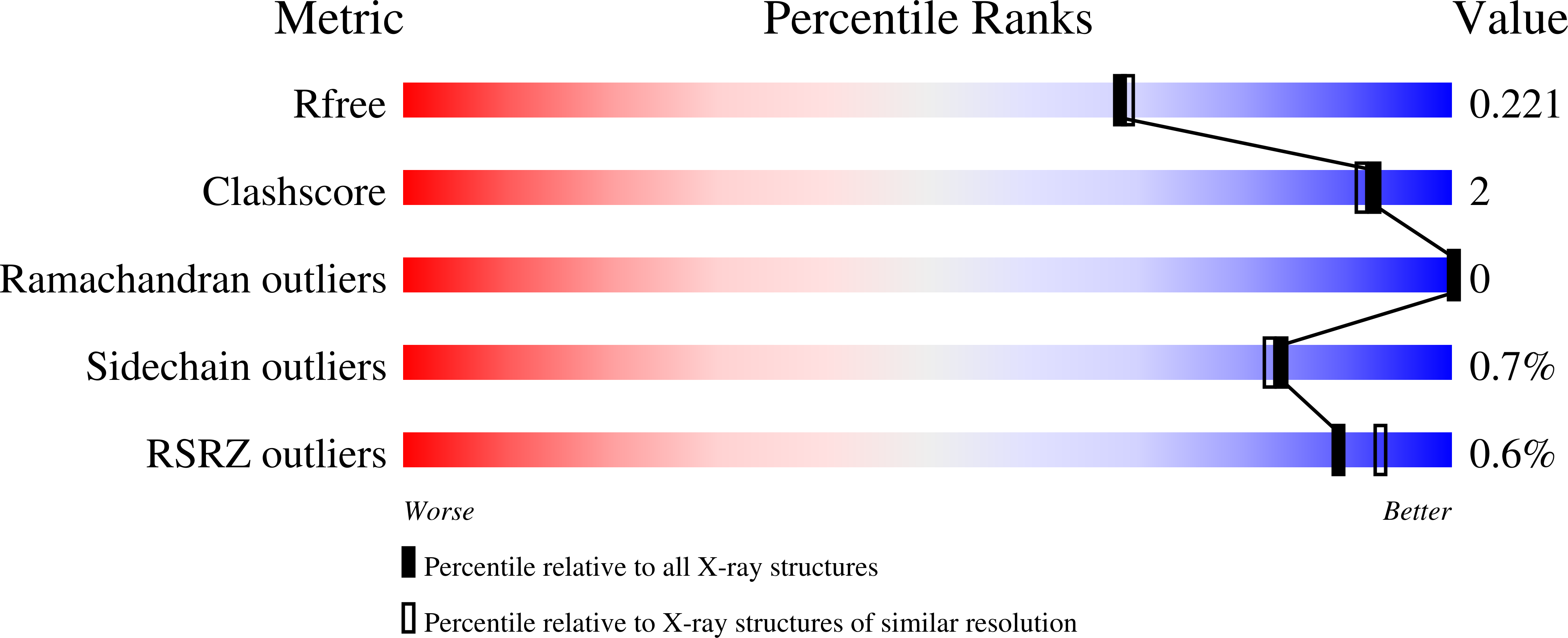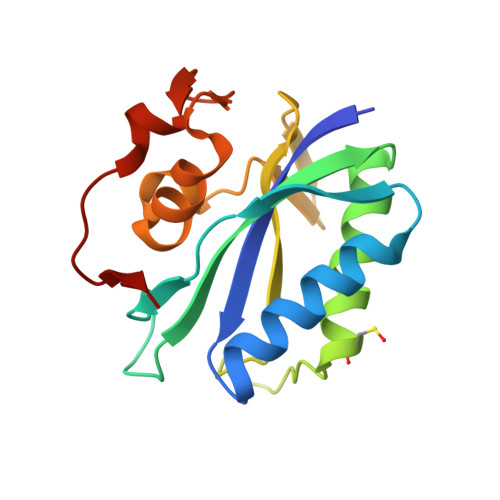Structural Basis for the Selective Binding of Inhibitors to 6-Hydroxymethyl-7,8-dihydropterin Pyrophosphokinase from Staphylococcus aureus and Escherichia coli.
Dennis, M.L., Pitcher, N.P., Lee, M.D., DeBono, A.J., Wang, Z.C., Harjani, J.R., Rahmani, R., Cleary, B., Peat, T.S., Baell, J.B., Swarbrick, J.D.(2016) J Med Chem 59: 5248-5263
- PubMed: 27094768
- DOI: https://doi.org/10.1021/acs.jmedchem.6b00002
- Primary Citation of Related Structures:
5ETK, 5ETL, 5ETM, 5ETN, 5ETO, 5ETP, 5ETQ, 5ETR, 5ETS, 5ETT, 5ETV - PubMed Abstract:
6-Hydroxymethyl-7,8-dihydropterin pyrophosphokinase (HPPK) is a member of the folate biosynthesis pathway found in prokaryotes and lower eukaryotes that catalyzes the pyrophosphoryl transfer from the ATP cofactor to a 6-hydroxymethyl-7,8-dihydropterin substrate. We report the chemical synthesis of a series of S-functionalized 8-mercaptoguanine (8MG) analogues as substrate site inhibitors of HPPK and quantify binding against the E. coli and S. aureus enzymes (EcHPPK and SaHPPK). The results demonstrate that analogues incorporating acetophenone-based substituents have comparable affinities for both enzymes. Preferential binding of benzyl-substituted 8MG derivatives to SaHPPK was reconciled when a cryptic pocket unique to SaHPPK was revealed by X-ray crystallography. Differential chemical shift perturbation analysis confirmed this to be a common mode of binding for this series to SaHPPK. One compound (41) displayed binding affinities of 120 nM and 1.76 ¦̀M for SaHPPK and EcHPPK, respectively, and represents a lead for the development of more potent and selective inhibitors of SaHPPK.
Organizational Affiliation:
Monash Institute of Pharmaceutical Sciences, Monash University , Parkville, Victoria 3052, Australia.





















